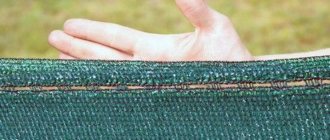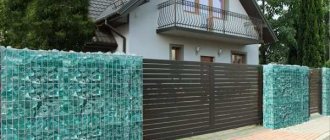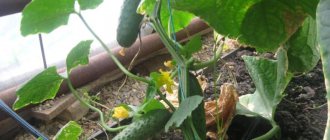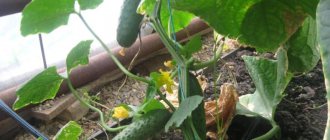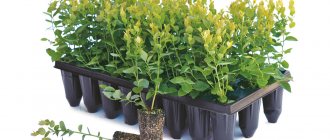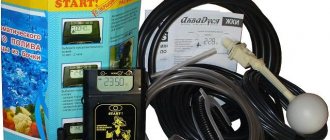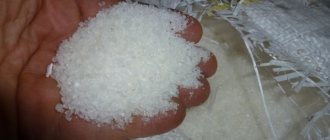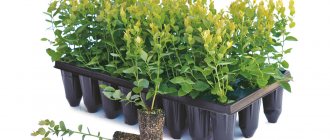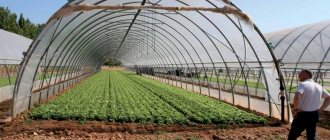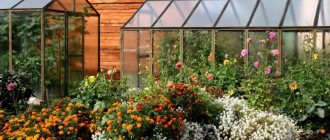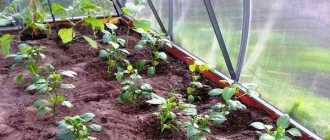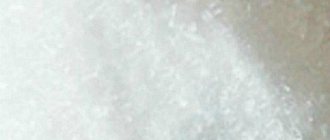Shading mesh is a lightweight, environmentally friendly material designed to protect from sunlight. It is no secret that global warming is making changes to the development of agriculture. In our country, every year, the average temperature in summer rises, the number of sunny days increases, therefore, the amount of ultraviolet radiation increases, which has a detrimental effect on agriculture and on humans in general. But a method of combating this phenomenon in the world has long been invented, and it is very effective! Shading mesh is very popular in Europe and all over the world, with the help of which you can solve a huge number of problems associated with ultraviolet radiation and more. This article will help you understand the types of grids and choose the right one for your purposes and needs. Let's figure out what a shading net is and what it is used with? The mesh is made from a synthetic, environmentally friendly material that can dissipate and absorb ultraviolet radiation, which is so abundant in sunlight. If you look at the structure of the mesh, it is essentially a single fiber, with many weaves that are evenly spaced from each other, with a large number of slots. The degree of shading of the grid directly depends on the number of these slots, we will call them cells. Shading mesh can be divided into areas of application: Mesh for camouflage purposes. It has a high density and will help you in camouflaging construction sites in order to hide construction debris, the unpleasant appearance of walls during repairs, scaffolding, etc. from prying eyes. It is also suitable for the construction of fences and canopies, since it has a lower degree of enlightenment.
Frame for shading mesh. Application of shading cloth on open ground
External influences of the level of light, heat, and humidity can have both positive and negative effects on seed germination, plant development and productivity. To obtain a high level of productivity of territories, plants require not only protection from excessive solar aggression, but also regulation of the supply of light fluxes. The amount of light received by crops must be sufficient for the photosynthetic cycle. Violation of the process guarantees that plants do not receive all nutrients from the soil and air, poor growth, low yields and death of crops.
A shading net for open ground, installed on frames, protects plantings from damage by hail or heavy winds. The material ensures the maintenance of constant temperatures, protection from morning frosts and excessive solar activity. The cellular fabric guarantees a free flow of air to the bushes, which protects the plants from overheating and reduces the possibility of damage to fruits and seedlings by putrefactive bacteria.
A correctly selected degree of shading ensures the creation of a favorable microclimate that promotes the simultaneous development of plants and ripening of the crop, reduces the level of moisture evaporation, and reduces the frequency of watering.
When planning your first use of the mesh, do not forget to take into account the changed requirements for planting density.
Pros and cons when using
- Shading mesh has many advantages:
- wide scope of application;
- usually made of durable materials, therefore, durable;
- It is easy to work with, even one person can handle it;
- protects from the harmful effects of environmental factors (sun protection properties, protection from insects and birds);
- does not rot;
- not subject to corrosion.
- However, there are a number of disadvantages:
- you need to buy only high-quality materials, which can be expensive;
- if a colored coating is used, then over time it will fade in the sun and may lose its quality;
- It can be damaged during installation, so you need to carefully read the instructions.
DIY frame for shading mesh. Description
The basis of the frame is made up of rack-holders for furniture pipes with a diameter of 25 mm of the Joker system. Specifically, an adjustable holder with threads on the ring and inside the base and a reinforced holder. Sections of HDPE pipe with a diameter of 25 mm were used as load-bearing elements, which will be threaded through the rings of the frame posts supporting the pipe. To make it easier to attach the mesh at the top and bottom, the ends of the vertical pipes are connected to each other with pipe sections using fittings. A shading mesh is stretched over the resulting frame and secured to it with special homemade clips.
Earth or clay mixture
Not everyone knows, but you can also paint, or rather, cover, walls with what is literally under your feet - earth or clay. Take half a bucket of clay or earth, fill it with water and leave it to swell. After this, add water to the top and coat the outside of the greenhouse with the resulting mass. This can be done conveniently with a roller on the handle or with your hands (bottom).
Like covering with improvised materials, this method of shading a polycarbonate greenhouse does not require any financial investment and is always available. However, be careful: small pebbles or debris that may be in the ground will leave scratches on the surface of the polycarbonate. To prevent this from happening, clear the ground of sharp particles. Difficult? But it's free!
DIY shade net. Do-it-yourself shading mesh for the vegetable garden
For greenhouse owners and other gardeners, with the onset of spring, the question of shading plants from the sun arises. For this purpose, a shading mesh is used. It is designed to protect not only greenhouse plants, but also crops in open ground from the sun. Manufacturers produce meshes of various sizes and with different cell sizes.
In addition to greenhouses and garden plants, it can also be used on the farm, for example, in canopies, awnings and even as a fence. The material from which it is made is synthetic, so it is strong and durable.
You can choose a product width from 2 to 16 meters; in addition, they are produced with varying degrees of shading from 30% to 80%. Nets with light and medium shading are used to cover light-loving crops, and with strong shading, they are used to cover fences and gazebos.
Nuances of choice
To successfully choose a suitable shading net for your dacha, you need to pay attention to the composition of the material. If you are looking for a high-quality fabric that should last a long time and be durable, you need to look for polycarbonate mesh. Such shades perfectly withstand aggressive external factors, but their price will be higher than that of canvases with other compositions.
Polymer mesh is also a good choice and offers the same strength at a lower cost. Strong gusts of wind and pests will not cope with such protection.
It differs from polycarbonate fabric in that it has a lower weave density, but it scatters and distributes the sun’s rays quite well over the surface.
You can also use the cheapest option - fabric mesh. They regulate the intensity of sunlight well, but have very low wear resistance. The material is not very durable, it can tear from a strong wind, and in conditions of constant humidity it can rot in a very short time.
Functions of a shading net in a vegetable garden
Since the material is made from synthetic material, it is very practical. The product is not afraid of sunlight, does not lose color, does not melt and is resistant to rain and hail.
Application for protection from the scorching sun, thereby preventing overheating of crops and the appearance of burns on them. To shade the greenhouse, you need to stretch the mesh over the structure and secure it. Thanks to this product, the temperature in the greenhouse will drop by 5-10 degrees. Thanks to the cellular structure, light penetrates evenly through it.
Protection from birds and bad weather. The use of a shading net stretched over plants in open ground prevents damage to fruits by birds, and during hail and strong winds it protects plants and crops.
In addition, if you stretch it over a rigid frame, you will get a kind of protective awning, under which the plants will be protected from the bright sun and other negative factors.
Installation Features
Installing a light-protective net for vegetables is very simple, the main thing is to prepare the necessary tools and stock up on materials. After reading the short instructions, even a novice gardener can easily cope with this.
The simplest shading option is to stretch the mesh over the plantation in the garden. In the case of greenhouses, most often the canvas is applied externally to the main surface, but you can also install it inside above the crop, having previously selected the material of the required density. If you are going to cover a small area with low plants, you can make a frame from supports in the shape of an arc.
To cover plants in the open ground, you can order a high ready-made frame. You will need to pay for the services of a master, but you can also purchase material and make the supports yourself.
For a homemade frame you will need wooden beams or metal rods.
To properly cover greenhouses, you also need to know a few important rules.
If the fabric for covering is not solid, it can be sewn from several pieces. To secure the mesh to a wooden frame, you can use special fasteners (clips) or use a furniture stapler. It would be reasonable to pull the canvas with eyelets onto the frame using a cable or nylon cord. This method of attaching the mesh is quite reliable, but not fully effective.
To use more beneficial properties, it is necessary to make a frame around the greenhouse; an air gap should form between the mesh and the greenhouse. You can make the frame yourself from a furniture tube. It is easy to attach a shading net to such a structure using clips, and the new structure of the greenhouse will significantly increase the yield of the plants inside.
Source
How to choose a shade net for your garden
If you have the desire and time, you can make a protective net yourself. To do this, you need to purchase dark nylon threads and weave it by hand. But doing it yourself takes a very long time, so in this case it is better to purchase it ready-made in a specialized store.
In order for the shading net to be beneficial, it must be chosen correctly. The choice of the required product is based on three parameters - color, degree of protection and purpose.
Color selection
Shade netting comes in several colors, and each color has an effect on the plants. The red product promotes the formation of larger fruits, increases the speed of flowering and reduces the likelihood of diseases.
Gray color promotes the appearance of friendly shoots, increases the number of shoots and increases the growth rate. The blue-green material helps create more favorable climatic conditions and protect plants from exposure to ultraviolet radiation. In addition, this color promotes earlier ripening of fruits.
Shading degree
The mesh with 45% shading allows a large amount of light to pass through and is suitable for protecting cucumbers and melons.
A denser product with 60% shading will save crops from extreme heat. Used for planting tomatoes, eggplants and cabbage.
70% shading is suitable for covering the outside of greenhouses. At the same time, it transmits the required amount of sunlight and protects plants from overheating.
80% shading is used for hedges and fences, car shelter. The material creates a good shadow.
Shading 90%. Such products are not used for plants, as they are too dense and practically do not transmit light. This mesh is suitable for equipping gazebos, summer areas, and so on.
Purpose of the product
Shading mesh is produced for use on cucumbers, tomatoes, for greenhouses, fences and camouflage.
A tomato net can significantly increase the amount of harvest and protect seedlings from withering.
The net for cucumbers has a shading degree of 45% and allows you to save the plants from drying out.
The camouflage net is not used in the garden; it is intended to cover and camouflage secret objects.
Products for a greenhouse can have different degrees of shading, this will depend on how it will be installed. If it is placed inside the greenhouse, then you need to choose a small degree of shading, and if outside, then the shading should be 70-80%.
Fence mesh allows you to quickly build a fence; for these purposes it is best to choose a material with a level of 90%.
Before purchasing a shading net, it is necessary to clearly determine the location of its placement, the level of illumination of the area and the size of the shelter. In order for it to last for more than one season, it must be removed after harvesting and stored in a cool place, such as a cellar.
Content
Therefore, today, shading mesh for greenhouses is especially in demand, which will help protect plants from the scorching rays of the sun and increase the profitability and prosperity of the farm. It is easily attached using special fasteners and stretched over greenhouse crops. If the greenhouse is opened, the mesh will protect the plants from direct sunlight. If increased light intensity is required to speed up plant maturation, it can be removed quickly and easily.
Features and principle of operation of greenhouse shading mesh
Our country is experiencing a period of climate change, as a result of which the winter period has become light and short-lived, and the summer season has become dry and hot. These natural phenomena negatively affect the yield. An innovative solution to the problem is a unique shading net, which is used on farms and in other areas of activity.
Russian and foreign manufacturers presented a wide range of shading nets. They are made of durable and wear-resistant synthetic material with the addition of foil, which is resistant to ultraviolet rays harmful to plants and to external influences. Green shading mesh, a photo of which can be found on the manufacturer’s website, is in particular demand among consumers. Also on sale you can find products in red, blue, white and other colors.
The operating principle of the unique shading mesh is to partially reflect and dissipate direct sunlight, which reduces the thermal impact. With proper selection of the degree of shading, the temperature in the greenhouse can be lowered by 5-15 C. This property of the innovative material creates optimal conditions conducive to the favorable development and growth of greenhouse plants.
Helpful information! If you did not have time to close the greenhouse structure before a thunderstorm, the mesh will effectively protect the plants and ripe fruits from possible damage.
The universal mesh is effectively used to create comfortable shade curtains:
Types of shading nets
Light-protective sheets are distinguished by application, degree of shading and color. Consumers are offered a universal shading mesh, which can be purchased to cover the entire greenhouse or to protect part of the frame located on the sunny side from the sun's rays. The light-protective fabric differs in the degree of shading from sunlight. The larger the cell size, the less protected the plants are.
| mesh shading degree | 45 to 90% |
| purpose of the product | shading of a greenhouse, open areas of a vegetable garden, gazebo, canopy, fence, vehicles, etc. |
| types of material packaging | bags, rolls, per meter |
Important information! The sunscreen effectively disperses the sun's rays, which guarantees uniform illumination of all areas of the greenhouse and the maturation of all plants.
Benefits of safety net
Professional farmers, gardeners and summer residents strive to increase productivity; this requires protecting plants from climatic influences and from direct sunlight. The main purpose of the shading net is to prevent crops from “burning” during the hot season. Compared to greenhouse film and other light-protective materials, it has many advantages:
Areas of application and features of the use of light-protective fabric
Shading mesh is a universal product that can be used for different purposes and areas of activity. Not only greenhouses and plants can be covered with light-protective fabric. It is widely used for shading gazebos, scaffolding, canopies, and facades of buildings for various purposes from the scorching sun. The mesh allows you to reliably hide from insects and the scorching sun in the summer heat.
By installing a light-protective sheet on the fence, owners of dachas and country houses can get rid of prying eyes from passers-by and neighbors. To do this, it is recommended to choose high-density fabrics that can be used in conjunction with a regular chain-link mesh. The product is attached to the fence elements using plastic clamps, and installation takes a little time.
Shading mesh is effectively used in greenhouses to regulate temperature and protect crops from the negative effects of the sun, precipitation and frost. The cellular fabric creates an ideal microclimate inside the greenhouse, promoting favorable growth of seedlings. If the greenhouse has a film coating, the mesh will protect it from wind and hail.
Helpful advice! If the greenhouse is large, then it is more advisable to use automatic shading control to protect plants.
Criteria for choosing a grid for shading greenhouses
The light-protective product can be used to cover farm and country greenhouses with any coating. By reflecting heat flows during temperature changes at night, the canvas will save up to 20% of heat. In order for the greenhouse mesh to perform its protective function as much as possible, it is necessary to correctly select the mesh, taking into account its characteristics and classification directions.
Recommendation! An integrated approach using shade netting, internal ventilation and artificial mist equipment can quickly lower the temperature in a greenhouse.
When choosing a protective mesh, you need to determine the required degree of shading and the size of the mesh cells. Every gardener knows that cultivated plants of different varieties need a certain degree of illumination of the land:
If you plan to use the shading mesh for domestic purposes, it is better to choose a fabric with a protection degree of 80%-90%. It compares favorably with awnings - it does not create a greenhouse effect and allows air to pass through, blocking the scorching rays of the sun. This is an excellent solution for arranging shady fences and roofs of street cafes, for organizing a cozy gazebo and retail spaces located in the open air. A fence with a shadow mesh is perfectly ventilated and, unlike a monolithic fence, does not interfere with the development and growth of plants.
When choosing a shading net for a greenhouse or open areas of a vegetable garden, it is necessary to take into account the climatic conditions of the area, the type of soil and the characteristics of the crops grown. The density of the canvas is selected depending on its purpose.
| Mesh shading degree | Scope of use of shadow cloth |
| 45% | for growing light-loving crops |
| 60% | for shading in hot conditions tomato, eggplant, cabbage, lettuce and herbs |
| 70% | for external covering of country and farm greenhouses |
| 80% | for covering vehicles, shading fences and hedges |
| 90% | almost does not transmit sunlight, used for arranging gazebos |
Manufacturers guarantee the service life of the shading mesh for 3 years. If you remove it after harvesting, it will last 5-6 years.
How to make greenhouse shading: features of mesh installation
Before installing the shading fabric, the farmer or summer resident must decide how the shading will be carried out and what materials need to be prepared for this. To attach the plant protection net, you will need clamps or clips and supports. It is lightweight, so installation of the canvas can be done by 2-3 people. Usually along the edge of the mesh there are holes intended for tension fasteners.
The function of supports can be performed by structures made of wood or metal. Due to the cellular structure, the wind does not tear or inflate the shade net, so it can be used in a greenhouse with an opening top ventilation. In summer, the temperature above and below the mesh may differ by 15C. In addition, it allows moisture to pass through and reliably protects plants from hail and gusts of wind.
The shading mesh is very durable, making it almost impossible to tear. If for some reason this happens, the rupture will not spread along the entire length of the canvas. When performing installation, you need to pay special attention to securing the supports, which, if they fall, can cause damage to greenhouse crops. Unlike them, a lightweight shade net for greenhouses will not damage the plants if it falls.
Classification of meshes: by application, by density and color
Meshes vary depending on application, degree of UV protection and color.
Camouflage camouflage nets with a maximum level of shading allow you to hide objects from prying eyes.
Shading nets for tomatoes are designed to increase productivity and protect seedlings from premature wilting. The average shading value is about 60-70%.
Shading cucumber nets prevent the soil and plants from drying out, and also help increase productivity by an average of 10-15%.
The most ideal option is a grid with a shading value of 45%.
Greenhouse shading nets for outdoor and indoor use to improve the greenhouse effect. Outside, protection from excessive ultraviolet radiation is provided by shading within 70-80%.
Shading nets for fences and fencing are available in models with shading rates of 80-90%, and the most modern canvases are capable of retaining precipitation.
Depending on the level of UV protection, modern nets can have a shading effect ranging from 45-90%. The lightest models transmit a fairly large amount of sunlight, so they cannot be used when growing the most sun-loving crops, including watermelon, melon and cucumbers. Thicker options are suitable for protecting peppers, tomatoes, cabbage and eggplant. Maximum sun protection is used when arranging fences, fences, and has also proven itself when creating recreation areas.
Red shading nets increase yields and have a positive effect on fruit quality, and also help prevent the spread of pathogenic microflora.
Gray shade nets are designed to protect plants from frost, increase shoot formation and accelerate growth processes.
Blue-green shading sheets are able to create optimal microclimatic conditions for the growth and development of plants and serve as protection against sunburn and fungal infections.
Overview of species
Choosing a grid seems like a fairly simple task, but to get the most out of your shading, you need to pay attention to every little detail. It is necessary to choose the right color, density and cellularity of the fabric for different needs. The mesh for a greenhouse will be very different from the mesh for open ground. The mesh is produced in a variety of sizes: from 2x20 to 5x50 meters. And this is not the limit either - if necessary, you can find a shading mesh that exceeds the standard parameters.
Shading nets are classified according to three main criteria: density, color and purpose. Let's look at each type in more detail.
By density
The degree of protection of plants from ultraviolet radiation depends on the density of the weave - the level of shading can vary from 40 to 95 percent.
For each crop, it is necessary to select a mesh with suitable light transmission.
Therefore, it is worth studying the characteristics of each level of weave density before proceeding with the installation of awnings.
By color
Manufacturers offer a wide selection of shade net colors. In demand:
Moreover, each color has its own useful qualities. For example, gray mesh protects young shoots from the cold better than others - it would be wise to use it for greenhouses.
Green nets have a beneficial effect on crop ripening, create optimal conditions for plant development and protect against various pathogenic infections, which is why they are often used to cover plants in open ground.
And to increase yield and improve the quality of fruits, they use red shade, which also prevents the appearance of harmful microorganisms.
By application
The production of shadow nets is focused on various consumer needs, which is why such products can be classified depending on the method of potential application. For example, a fairly dense garden net stretched under a fruit tree can prevent the fruit from falling to the ground. This preserves the neat appearance of the crop and extends its shelf life.
Of course, first of all, the shading net is created to cover agricultural crops. In addition to vegetable gardens and greenhouses, you can use it as a canopy.
It is also very convenient to hide the facade of the building from prying eyes with a shade during renovation.
In this case, a mesh screen with eyelets is a good choice - it will be convenient to stretch it between the beams of scaffolding and easy to remove after completion of the work.
Network Mix
Materials
- Nylon base network.
- Fabric strips, rags, linen washcloth, etc.
- Paints in brownish, yellowish and greenish shades.
- Spray gun or brushes.
We purchase a piece of nylon mesh (weaving it independently from thread is impractical - since with extremely low cost savings we will get an unnecessary and extremely labor-intensive process) with a cell side ranging from 30 to 50 mm.
The size of the piece depends on the subject of disguise (3 x 2.5 meters will be enough for a person, about 6 x 3 meters for a car).
When planning to weave a disguise for a hunter, it is recommended to cut a hole for the face. In this case, the ends of the threads will need to be cauterized to prevent unraveling. It will be possible to hide your face behind a separately made “veil” from the same mesh (it will be easy to secure it separately, and if necessary, fold it up or unhook it).
Preparing material for camouflage stripes. Ideally, you should try to use only synthetics (artificial silk, nylon or nylon cut fabrics, etc.) - since these materials are the lightest and also do not absorb odors and moisture. It is advisable to select the color in yellowish, brownish, gray, marsh-green shades - otherwise you will have to do the painting yourself.
Let's start cutting the canvas into strips. Their width should be chosen from 5 to 15 mm, and their length - from 15 to 50 cm. In addition, the strips should be cut at one end - about a third of the length of each (they can be folded in several pieces to speed up the process). The result will be a heap of fabric “New Year’s tinsel”, which will be attached to the base.
In addition to synthetics (or even instead of it), you can take the lightest and most inexpensive natural materials (bast, linen braids, etc.) - but only on the condition that when they are abundantly wetted, no foreign odors will appear and the “suit” will not become excessively heavy .
The net should be hung in an open space (in the yard or a spacious indoor room) and begin attaching the “tinsel.” It is better to make knots of strips pulled through cells using a square-nested or any other method in cells located not adjacent, but diagonally, which will increase the reliability of fixation.
We suggest you read How to wash cutlery. How to clean spoons from tea deposits.
Weaving should be continued until objects located on the back side of the mesh are no longer visually distinguishable from a distance of 5–10 meters.
We spray paints of the required shades onto the finished camouflage network, spreading the stream chaotically. Additionally, you can make several brush strokes - which will give the disguise even more texture and naturalness.
Materials:
- Nylon net for the base.
- Natural materials (bast, rope tow, tufts of grass, moss, small thin twigs, flax braids).
- Spray paint and brushes.
Hardware
They are distinguished by wear resistance and relatively inexpensive prices. Suitable for dividing an area into several zones and providing additional protection. Every year more and more original products with an unusual appearance are produced. Simple manufacturing and durability are among the main advantages that influence the decision of how to close the fence.
This type of chain link can last up to five years. Wire will be an excellent solution if there are no excessive requirements for strength. They create beautiful compositions with vines and climbing flowers. You can get a variety of options.
Corrosion means that the service life of the simplest products is no more than three years. When using polymer coatings, the effect is better, but the cost also increases. In this case, performance characteristics will also be better. The use of needles of artificial origin is also acceptable.
Based on their properties, galvanized mesh is the best choice. Such fences last at least 10 years. In this case, the base is made of corrugated or twisted steel rods. Thanks to this, the product acquires a unique three-dimensional volume.
Welded mesh fence requires no maintenance and is quick to install
The popularity of welded structures also has its reasons:
- affordable prices;
- easy installation;
- ability to maintain shape, protection from sagging.
Products in this group do not require additional painting. Fencing options are especially convenient when the manufacturer covers the surface of the products with polymers. Baking technology is used. Before purchasing, you need to make sure that the surface is free of cracks.
Welded meshes with three-dimensional effects also have an original appearance. Only materials with additional galvanization will last a long time. In this case, the chain-link fence is protected from negative influences.
Popular manufacturers
Below are 4 of the most popular manufacturers of camouflage products.
Nitex
The largest Russian manufacturer of camouflage products. It offers many options for colors and cell shapes, so the buyer can always find a product that is suitable for its intended purpose. The range of prices makes the products accessible to everyone.
Duck Expert
Russian manufacturer. Specializes in the production of goods for hunting, including camouflage nets and clothing. The quality of the products is not inferior to imported analogues, but costs much less.
Siberia
The Russian company produces and sells camouflage products. Individual orders for the production of large quantities of products are accepted.
Camosystems
A famous brand under which camouflage clothing, nets, and goods for hunting and fishing are sold. Country of origin: USA.
How to shade the beds from above
Shading created by competent alternation of plants of different heights or with the help of covering material will help protect plants from the scorching sun.
Video: protecting plants from the sun
Protective scenes
Often the garden beds are placed so that during the midday heat they are in light shade from fruit trees. But not under the crown itself, otherwise the shading by the foliage will be too strong, and the roots of the trees will deplete the soil, drawing moisture and nutrients from it.
To prevent the beds from being under dense foliage shadow, they should be located a short distance from the crown
You can also create artificial shading by carefully planting tall and short plants in the garden. Corn, grapes, and climbing beans are used as high curtains, which are planted in rows, and vegetables are planted between them.
Corn curtains are used to shade vegetable plantings.
Canopy crops easily tolerate heat and shade low-growing plantings. It is only necessary to leave wide passages between the main crop and the protective one: for corn - 40 cm, for grapes - 1 m 20 cm.
The grapes on the trellis act as a curtain, shielding the beds from the scorching rays of the sun
Artificial shelters
A small shade can be easily created using dry bunches of corn and sunflower stalks, which are attached to pegs driven into the beds every half meter. However, after rain, all protective material will have to be replaced. Sheets of paper attached to slats on the south side will also save plants from the sweltering heat. But in windy weather this method of protection is ineffective.
Thanks to the shelter of such boxes, plants survive even in extreme heat.
It is more reliable to use special protective materials.
Light stabilized film
Polyethylene film can serve as a shade for beds, but not ordinary film, but light-stabilized film. It comes in yellow color and has a special coating that protects against the destructive effects of ultraviolet radiation. The film scatters light, as if cutting off part of its spectrum, thereby eliminating sunburn of plants.
Light-stabilized polyethylene film has a special coating that scatters sunlight
However, sealed polyethylene does not allow air and moisture to pass through, so it must be removed for ventilation and watering or ventilation holes must be made in it. Condensation that accumulates on the surface of the film can provoke the development of diseases. Service life 3 years.
Light-stabilized films come in different colors and properties; they are often called “stabilized films for greenhouses”
White agrotextile - spunbond
White agrofibre will last longer, 5–6 years. Lightweight “breathable” material provides plants with reliable protection from the summer heat, reflecting the visible part of the sunlight spectrum and absorbing harmful infrared rays. Free circulation of air and moisture, diffused light under such shelter provide plants with a favorable microclimate, and, consequently, good productivity. Spunbond covers the frames of beds, a greenhouse, and a greenhouse. Agrotextiles have a drawback: in strong winds, they flap, flap, and can even tear. And it's not cheap.
Spunbond is fixed to supports or thrown directly onto plants
Light protection mesh (agricultural mesh)
The ideal shelter for garden beds from the summer heat is a shading net. Made from a synthetic thread containing aluminum foil, it diffuses and reflects the sun's rays, thereby reducing the ambient temperature. The mesh has varying degrees of sun protection. The standard percentage that will allow plants to develop intensively is 45–60%. Shade mesh is used in greenhouses, stretched under the roof or laid outside on the greenhouse cover.
The shade net not only protects the beds from the scorching sun, but also from birds and hail damage
To shade plants in open ground, a metal frame is installed in the garden bed, onto which a mesh is secured with ties. This light-protective material is quite expensive, but with proper use it can last about 10 years.
Video: Shading mesh
Differences in shade products
Regardless of the manufacturer, domestic or foreign, networks differ in:
Dimming strength. This figure varies from 45 to 90 percent. Light-loving plants such as tomatoes, cucumbers, pumpkins, melons will benefit from material with a dispersion of 45%. In case of extreme heat, such a mesh will not save the inhabitants of the greenhouse.
They are usually placed inside greenhouses. From the scorching rays, you will need a net with a degree of shading of 60% to 70%.
To cover enclosing surfaces, such as a fence, products with a dispersion of 80 to 90% are intended. Nets from 60 to 90% are usually used on the outside of greenhouses and buildings.
Material of manufacture. The raw materials for shading nets can be as follows: – polycarbonate. It is considered the most expensive and durable for mesh shelter. It does not deteriorate and will last for several seasons.
The structure does not deteriorate under the influence of unfavorable factors.
- polymer. The material is cheaper than polycarbonate. It has a lower density, but is perfect as a shelter from wind, rain, insects and sun.
- textile. This is the most budget option. The structure of such a mesh consists of foil and synthetic thread. The sun's rays are not only scattered, but also reflected from it. The mesh has one disadvantage - it allows moisture to pass through and subsequently rots. Such a network will not last long.
- By color. The owner of a garden plot can purchase a net for a greenhouse of any color. Color affects the yield and speed of fruit ripening.
Let's look at a few colors in more detail. Red. Promotes rapid flowering and fruit ripening. Blue. Has a retarding effect on fruit growth and ripening. Suitable for growing herbs (parsley, dill, lettuce, basil, etc.). Grey. Protects against night frosts. Used for flower crops. Grey-green. Accelerates the process of ripening and enlargement of fruits. Blue-green. Nets with a similar color are intended for year-round use. Protects from mold and sun.
About varieties
Weaving or welding are the main technologies used during installation.
- Rabitz.
The most famous type of wickerwork. Galvanized wire with a round cross-section is the main manufacturing material for such products. The size of the cells and the thickness of the wire are the main differences between the different types. You cannot do without periodic touch-ups if the base is black steel mesh. In the case of galvanized products, painting can be omitted.
- Twisted mesh for fence.
These products are rarely found in the case of fences. In this case, the wire is twisted at a certain angle, resulting in hexagonal-shaped cells.
- Channeled or corrugated mesh.
It is implemented in the form of so-called karts. The composition of the raw materials means that the products cannot boast of particular flexibility. The main material used in production is carbon steel, black. The wire is bent using a special technique before weaving begins. In this case, the strength will be maximum.
A chain-link fence is well suited for installation between adjacent areas. Twisted mesh is used to reinforce heat-insulating mats for caged fur farming (fencing small pens for animals and birds) Corrugated mesh
- Made from galvanized steel wire, which helps provide excellent protection from destructive processes inside.
4 millimeters is the smallest wire thickness. The maximum figure is three times more. Products with the highest strength are created based on reinforcing mesh. Spot welding is a technology that helps to fasten the joints of rods that intersect perpendicularly. Square and rectangle are the most common cell shapes.
- Expanded mesh.
Made from a whole steel sheet. Cutting and drawing of steel is performed using special equipment. The standard cell shape in this case is a rhombus. The thickness of the material and the width of the cutting determine how rigid the product will be. If possible, it will provide strength and stability for several years.
- Gabion.
It has the form of cylindrical, rectangular boxes made of cells of different types. The internal filling is selected by customers to their taste. Stone and wood cuts are the best choice.
- Plastic fences.
- Woven products. Expanded metal mesh Gabion mesh Plastic fence copes well with excess moisture without succumbing to corrosion
